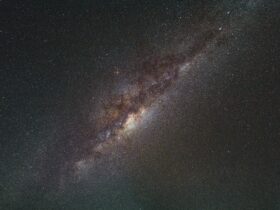Astrophysicists have uncovered a rare planetary system featuring a remarkably dense super-Earth and a non-transiting companion, orbiting a Sun-like star known as K2-360. The system, located about 600 light-years away, contains a unique ultra-short-period (USP) planet, K2-360 b, which completes an orbit around its host star in under a single day—a swift 0.88 days, to be precise. This discovery, led by John H. Livingston and his team and published in Scientific Reports, offers a tantalizing glimpse into planetary formations we don’t see in our own solar neighborhood.
A Planet of Remarkable Density
K2-360 b, which belongs to a category of planets known as ultra-short-period planets, has an unusual mass and density. This rocky planet has an estimated radius of approximately 1.57 times that of Earth, yet it packs in a mass around 7.7 times that of our planet, giving it a density over five times that of Earth. In fact, it’s the densest USP super-Earth that’s been measured, suggesting it’s composed of a mix of heavy metals, like iron, and silicate rock. This density is especially puzzling, as planetary models suggest this world could have once hosted a thick, volatile-rich atmosphere, now stripped away due to its close proximity to K2-360, leaving behind an iron-dense core.
The Outer Companion and Its Role in Planet Migration
Adding to the mystery, high-precision measurements from the HARPS and HARPS-N telescopes detected a second, non-transiting planet orbiting further out from K2-360. This outer planet, dubbed K2-360 c, has an estimated orbital period of 10 days. Unlike its dense sibling, K2-360 c has a lower minimum mass, indicative of a Neptune-like composition rather than rocky. Researchers hypothesize that the gravitational interactions between K2-360 b and c might have played a crucial role in nudging the inner planet inward, closer to the star—a process believed to involve a mechanism called the von Zeipel–Kozai–Lidov (ZKL) effect, which is influenced by gravitational interactions and the outer planet’s inclination.
How the System Defies Current Models
What makes this discovery so intriguing is how K2-360 b challenges existing theories about how planets form and evolve. According to planetary formation models, planets like K2-360 b shouldn’t end up in such a close orbit. The traditional view is that planets form further out in a protoplanetary disk and, if conditions allow, migrate inward over millions of years. However, for K2-360 b to end up in an orbit so close, it likely underwent high-eccentricity migration, a phenomenon where gravitational interactions with another body (in this case, K2-360 c) caused the inner planet’s orbit to become more elliptical. Over time, tidal forces from the star smoothed out the eccentric orbit, bringing K2-360 b closer.
This migration theory for K2-360 b is still being explored, with some simulations suggesting the planet’s current position could only have been achieved with a high mutual inclination between K2-360 b and c. This configuration would trigger the ZKL effect, increasing the inner planet’s orbital eccentricity to extreme levels before it eventually settled into its present, circular orbit. If confirmed, this interaction offers one of the most detailed insights yet into how densely packed, close-orbit planets come to exist.
A Unique Insight into Planetary Evolution
The presence of such a dense planet within such a close orbit to its star opens up several avenues for further study. For one, K2-360 b’s composition—more akin to a rocky super-Earth than a Mercury-like iron core—hints that it may have once been much larger. Researchers theorize that the intense stellar radiation from K2-360 might have stripped away an initial, more volatile atmosphere, leaving behind a “stripped core” dense enough to endure the blazing proximity of its star.
What’s Next for the K2-360 System?
This planetary system provides a rare opportunity to study the effects of tidal dissipation, atmospheric stripping, and potential obliquity-driven migration in super-dense planets. K2-360 b’s high density, combined with the configuration of K2-360 c, suggests that this type of planet formation may be more common than previously thought, especially in systems with one or more giant companions.
This new super-Earth adds to the growing list of puzzling discoveries in exoplanet research, challenging scientists to refine their understanding of planet formation and evolution in extreme environments. With instruments like the James Webb Space Telescope poised for exoplanet studies, future observations could confirm whether K2-360 b harbors any trace of a secondary atmosphere—perhaps even one formed through outgassing after its migration inward. Whatever the case, K2-360 b offers a stellar example of nature’s ability to craft planets that defy both expectations and explanation.












Leave a Reply